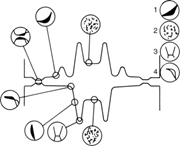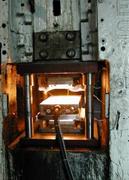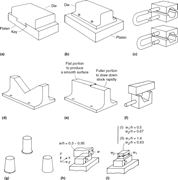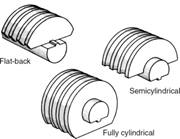Skip Nav Destination
Close Modal
Search Results for
forging dies
Update search
Filter
- Title
- Authors
- Author Affiliations
- Full Text
- Abstract
- Keywords
- DOI
- ISBN
- EISBN
- Issue
- ISSN
- EISSN
- Volume
- References
Filter
- Title
- Authors
- Author Affiliations
- Full Text
- Abstract
- Keywords
- DOI
- ISBN
- EISBN
- Issue
- ISSN
- EISSN
- Volume
- References
Filter
- Title
- Authors
- Author Affiliations
- Full Text
- Abstract
- Keywords
- DOI
- ISBN
- EISBN
- Issue
- ISSN
- EISSN
- Volume
- References
Filter
- Title
- Authors
- Author Affiliations
- Full Text
- Abstract
- Keywords
- DOI
- ISBN
- EISBN
- Issue
- ISSN
- EISSN
- Volume
- References
Filter
- Title
- Authors
- Author Affiliations
- Full Text
- Abstract
- Keywords
- DOI
- ISBN
- EISBN
- Issue
- ISSN
- EISSN
- Volume
- References
Filter
- Title
- Authors
- Author Affiliations
- Full Text
- Abstract
- Keywords
- DOI
- ISBN
- EISBN
- Issue
- ISSN
- EISSN
- Volume
- References
NARROW
Format
Topics
Book Series
Date
Availability
1-20 of 558 Search Results for
forging dies
Follow your search
Access your saved searches in your account
Would you like to receive an alert when new items match your search?
1
Sort by
Series: ASM Handbook
Volume: 14A
Publisher: ASM International
Published: 01 January 2005
DOI: 10.31399/asm.hb.v14a.a0004024
EISBN: 978-1-62708-185-6
... process. The indirect rapid tooling technologies include 3D Keltool process, hot isostatic pressing, rapid solidification process tooling, precision spray forming, and radially constricted consolidation process. 3D Keltool process direct rapid tooling forging dies hot isostatic pressing indirect...
Abstract
This article describes two rapid tooling technologies, namely, direct rapid tooling and indirect rapid tooling, for forging-die applications. Commonly used direct rapid tooling technologies include selective laser sintering, three-dimensional printing, and laser-engineered net shape process. The indirect rapid tooling technologies include 3D Keltool process, hot isostatic pressing, rapid solidification process tooling, precision spray forming, and radially constricted consolidation process.
Image
Published: 01 January 2005
Fig. 9 Common failure mechanisms for forging dies. 1, abrasive wear; 2, thermal fatigue; 3, mechanical fatigue; 4, plastic deformation. Source: Ref 6
More
Image
Published: 01 January 2005
Fig. 3 Common failure mechanisms for forging dies. 1, abrasive wear; 2, thermal fatigue; 3, mechanical fatigue; 4, plastic deformation. Source: Ref 2
More
Image
Published: 01 January 2005
Fig. 23 Temperatures at the surface and at various depths in forging dies obtained during forging 1040 steel without lubricant. Source: Ref 32
More
Series: ASM Handbook
Volume: 14A
Publisher: ASM International
Published: 01 January 2005
DOI: 10.31399/asm.hb.v14a.a0003975
EISBN: 978-1-62708-185-6
... Abstract This article addresses dies and die materials used for hot forging in vertical presses, hammers, and horizontal forging machines (upsetters). It reviews the properties of die materials for hot forging, including good hardenability, resistance to wear, plastic deformation, thermal...
Abstract
This article addresses dies and die materials used for hot forging in vertical presses, hammers, and horizontal forging machines (upsetters). It reviews the properties of die materials for hot forging, including good hardenability, resistance to wear, plastic deformation, thermal fatigue, and mechanical fatigue. The article describes heat treating practices commonly employed for chromium- and tungsten-base AISI hot-work tool steels. It discusses the fabrication of impression dies, and the advantages and disadvantages of cast dies. The article concludes with a discussion on the factors that affect die life and safety precautions to be considered during die construction.
Book Chapter
Series: ASM Desk Editions
Publisher: ASM International
Published: 01 December 1998
DOI: 10.31399/asm.hb.mhde2.a0003183
EISBN: 978-1-62708-199-3
... Abstract Forging machines use a wide variety of hammers, presses, and dies to produce products with the desired shape, size, and geometry. This article discusses the major types of hammers (gravity-drop, power-drop, high speed, and open-die forging), and presses (mechanical, hydraulic, screw...
Abstract
Forging machines use a wide variety of hammers, presses, and dies to produce products with the desired shape, size, and geometry. This article discusses the major types of hammers (gravity-drop, power-drop, high speed, and open-die forging), and presses (mechanical, hydraulic, screw-type, and multiple-ram). It further discusses the technologies used in the design of dies, terminology, and materials selection for dies for the most common hot-forging processes, particularly those using vertical presses, hammers, and horizontal forging machines. A brief section is included on computer-aided design in the forging industry. Additionally, the article reviews specific characteristics, process limitations, advantages, and disadvantages of the most common forging processes, namely hot upset forging, roll forging, radial forging, rotary forging, isothermal and hot-die forging, precision forging, and cold forging.
Image
Published: 01 January 2005
Image
Published: 01 January 2000
Fig. 11 Effect of contact area between dies and workpiece in forging a solid round billet. Source: Ref 1
More
Image
Published: 01 January 2005
Image
Published: 01 January 2005
Image
Published: 01 January 2005
Fig. 1 Typical dies and punches used in open-die forging. (a) Die mounted with dovetail and key. (b) Flange-mounted die. (c) Swages for producing smooth round and hexagonal bars. (d) V-die. (e) Combination die (bar die). (f) Single loose die with flat top for producing hexagonal bars. (g
More
Image
Published: 01 January 2005
Fig. 12 Typical procedure for the forging of a gear blank and hub in open dies, featuring the use of a bolster. Dimensions in figure given in inches Stock preparation Cold sawing Stock size 203 × 203 × 197 mm (8×8×7 3 4 in.) Stock weight 64 kg (140 lb) Forging
More
Image
Published: 01 January 2005
Fig. 14 Sequence of operations in the forging of a large turbine rotor in open dies. Dimensions given in inches
More
Image
Published: 01 January 2005
Fig. 1 Upset forging process using split dies. 1, stationary die; 2, moving die; 3, upsetting punch. (a) Inserting bar in open dies. (b) Closed dies gripping bar. (c) Upset forging. (d) Upsetting punch withdrawn. (e) Ejection of the forging
More
Image
Published: 01 January 2005
Fig. 15 Typical arrangement of sliding dies used for forging an upset at some point along the length of a bar
More
Image
Published: 01 January 2005
Image
Published: 01 January 2005
Image
Published: 01 January 2005
Fig. 16 Orientation of a forging in the die to avoid counterlocked dies and to eliminate draft. Workpiece forged (a) with and (b) without lock in die
More
Image
Published: 01 December 1998
Image
Published: 01 December 1998
Fig. 23 (a) Dies used in roll forging. (b) Overhang-type roll forger that utilizes fully cylindrical dies
More
1

















